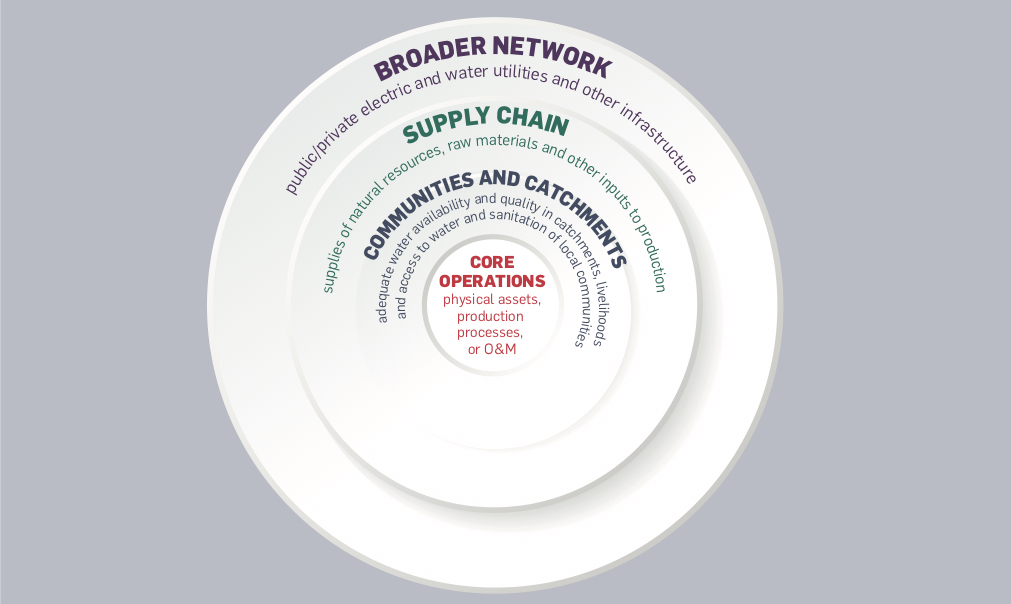Climate change is already affecting the direct operations, value chains and surrounding communities of companies around the world, as well as the broader networks on which they depend (Figure 1). The potential impacts of water-related climate risks to companies (Figure 2)1 include:
- Storms damaging facilities and transportation/energy infrastructure and equipment.
- Flooding from intense rainfall interrupting production and necessitating interventions to increase water treatment capacity. In 2011, flooding in Thailand cost Ford Motor Company 34,000 units in lost production.2
- Droughts reducing the availability and/or increasing the cost of natural resources and related inputs. For example, reduced water availability can result in power outages and disruption.
- Increased competition for natural resources driving conflict with local communities, production interruptions, and potential asset stranding.
In 2018, 215 of the world’s largest companies reported exposure to US$970 billion in climate risks (transition and physical risks).3
Figure 1. The physical impacts of climate change go beyond a company’s direct operations4

Climate change is a threat multiplier, often exacerbating existing water-related risks. In many regions, climate change is increasing water stress, posing a major challenge for water-intensive sectors like apparel, food and beverage and agriculture.5 Companies with long-lived fixed assets, such as those in the mining and power sectors, are especially vulnerable to the water-related impacts of climate change.6
Figure 2. Examples of physical impacts of climate change experienced by companies
Companies can inadvertently increase climate-related risks for vulnerable communities through competition for water during droughts, or emergency spillage of waters during floods and extreme rainfall events. Some communities are disproportionately vulnerable to climate change impacts due to their direct reliance on water and natural resources for their food and livelihoods, poor access to clean water and sanitation, and exposure to extreme weather events. Additionally, there is an outsized impact on women, children, migrants, the urban poor and indigenous people.
- Goldstein et al., “The private sector’s climate change risk,” 18-25.
- Ford’s CDP Report: 2018-2019. https://corporate.ford.com/microsites/sustainability-report-2018-19/assets/files/ford-response-to-carbon-disclosure-project.pdf
- Climate transition risks are defined as financial risks which could result from the process of adjustment towards a lower-carbon economy (https://beyond-ratings.com/publications/climate-transition-an-unpriced-risk-2/). Climate physical risks are defined as physical damage that companies may sustain from climate change induced environmental changes such as extreme weather events (https://www.schroders.com/fr/insights/economics/how-will-physical-risks-of-climate-change-affect-companies/).
- Adapted from Sussman, F.G. and J.R. Freed, Adapting to climate change: A Business Approach, Center for Climate and Energy Solutions, 2008.
- UNESCO, The United Nations world water development report 2019: Leaving No One Behind. https://en.unesco.org/themes/water-security/wwap/wwdr/2019.
- ICMM, Adapting to a changing climate – building resilience in the mining and metals industry. https://www.icmm.com/website/publications/pdfs/climate-change/191121_publication_climate_adaptation.pdf.
